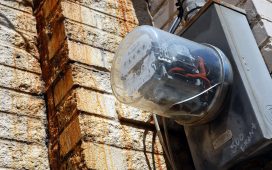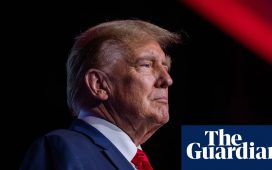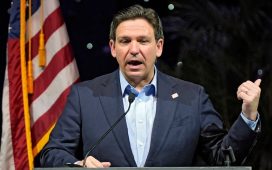As a mother and former truck driver, Ticole Smith, better known as Colah B Tawkin, has experienced both being unhoused and receiving international recognition through her popular podcast Black in the Garden.
From her home base in Atlanta and through her collaboration with Atlanta public radio station WABE, Atlanta Botanical Garden, and speaking engagements across the country, Tawkin works to (re)connect Black and Brown people in primarily — but not exclusively — urban environmental justice communities with their innate connection to the natural world as a means of resilience against disinvestment and climate change.
It’s well established that BIPOC communities disproportionately bear the dual burden of disinvestment and adverse environmental impacts from the effects of climate change. At the same time, the climate movement lacks diversity — specifically, leadership remains overwhelmingly White, and to a somewhat lesser extent, male. Added to the mix is a persistent and inaccurate perception that people of color, and especially Black folks, don’t care about environmental issues, and are fundamentally disconnected from nature.
“There is no relationship more sacred than that between Black folks and the natural world. Within the roots and branches of trees, Black folks find mirrors to their deep ancestral strength and resilience. These earthly wonders narrate our lives, weather our storms and bear witness to histories untold. They remind us of who we once were, and who we are meant to be,” said Tawkin during a recent virtual interactive presentation with the Morton Arboretum, located in the Chicago suburb of Lisle, Illinois.
Events like these are par for the course for Tawkin, who represents one of a handful of Black female advocates in the environmental realm.
“There’s not a lot of Black people doing the kind of stuff that I do. So naturally, when the word gets around where [environmental organizations] are trying to figure out, ‘How do we diversify our programming?’, my name tends to come up at the top of the list,” Tawkin said during an interview.
Tawkin also views herself as a pioneer — her very presence a challenge not only to the predominantly White composition of the environmental movement, but also active resistance among White people who refuse to embrace change.
“Being a Black woman in a world that I know does not really represent me in a very robust way makes me feel like a pioneer, and pioneers are revered when we’re looking in hindsight at history and people who started something. But we don’t so closely consider what the experience of a pioneer is like, and how they had to be the first person to venture into a territory that very well could have been hostile.
“I don’t feel like there is a lot of hostility on a frequent basis, but I do know, at the very least [there are] people who see what I’m doing and know what I’m capable of and they’re not okay with that … [but] I do not think about those people. I think about who does want to support me,” Tawkin said.
Black in the Garden
Tawkin’s work with the Black in the Garden podcast and related endeavors reflect not only a deep and longstanding love of nature, but a recognition of a need for greater Black, Brown and Indigenous presence in the green movement.
“I’ve always had a vision for this from the start, so failure was never an option,” she said. ‘That’s precisely why I chose the name Colah B Tawkin — because I’m always talking. It’s a stage name that reflects my readiness to start the podcast. When you hear my name, you know exactly what I do.”
She also aimed high, targeting her podcast for the national public broadcasting market and structuring the format and the length of her show accordingly. That has paid off with a newly announced partnership with Atlanta-based WABE, which will distribute the show online as part of the NPR Podcast Network.
“When I started Black in the Garden, I knew 1000% that it would be a successful platform,” she said. “I knew that it would resonate with those who it resonated with.”
“There was no gardening programming that I felt spoke to me, and I recognized that there’s an opportunity for me to start one … there are so many of these stories that are specifically related to our relationship with the land and agriculture and horticulture that really are so just grossly undertold,” Tawkin said.
“I remember in the beginning … people don’t ask me this no more, but in the beginning, Black people would ask me, well, ‘Why Black in the Garden? Like, don’t you want to be relatable to everybody?’ And that put me straight into Toni Morrison mode, and I was just like, we get to tell our stories about us because it’s us and we want to make sure that it’s reaching us. And so, I was intentional from the beginning and including ‘Black’ in the title,” Tawkin said.
And while her audience of “soil cousins” enthusiastically bridges racial and other categories, her focus remains firmly on embracing Black people and overcoming decades of generational hurt from slavery, Jim Crow, redlining and other manifestations of racism — including, she says, “some darker aspects to our relationship with nature.”
“That was why I discussed lynchings in the in the talk that I did … What am I going to talk about if I’m going to emphasize Black people’s relationships with trees?” Tawkin said. “The good, the bad, and the ugly was literally the first thought that came up … and then when I thought about the bad, I was just like, oh no, it gets real bad.
“But it cannot be overstated that nature is just what it is. It’s a very neutral thing.”
Disinvestment in environmental justice communities represents a significant driver of generational pain among Black, Brown and Indigenous communities. The work of stakeholder-based organizations is essential in working toward healing this generational hurt, Tawkin said.
At the same time, she said, nonprofit organizations — as well as government at all levels — also bear a level of responsibility in providing financial and other resources to address these challenges.
“So in order to be able to cope with all of the challenges that come with attaining liberation, and just get through it to actually enjoy liberation, resilience is kind of like the fuel, or it’s the fuel,” Tawkin said. “What other choice do we have besides to be resilient?”
Resiliency and ‘witness trees’
During her presentation for the Morton Arboretum, Tawkin explained that witness trees, such as The Survivor Tree in Oklahoma City, serve as living reminders of significant points in history.
“They are often found near sites of historical significance, and serve as living witnesses to events, such as slavery, civil rights, struggles, and African American settlements, and so much more when you consider the age of trees,” Tawkin said.
The survivor tree sits near the site of the 1995 Oklahoma City bombing, and was almost chopped down to recover evidence of the deadly terrorist attack.
“We may be able to identify or not identify, but rather find, like blast shards, bullets, or something that could penetrate a tree, could actually be lodged in that tree,” Tawkin explained.
For Tawkin, trees — and specifically witness trees — also bear a vital role in promoting resiliency, especially among people of color, who often create and maintain spiritual rituals in green spaces.
“There are trees that are connected to different cultures across the diaspora and different parts of the world that have deep spiritual meaning. People of color and Indigenous people in particular have these spiritual kinds of practices that are connected to trees,” she said.
“The ritual literally takes place with the tree being a physical … Basically, it’s a sanctuary,” Tawkin said.
The Oklahoma survivor tree “absorbed some physical evidence” of the explosion, not only “witnessing the events that it was there for, but the spirits around it, like people are dying around it,” Tawkin said during a subsequent interview. “It’s easy to believe that these spirits are able to connect with or merge into the tree.”
As an example, she cited a particular tree located at the Fairchild Botanic Garden in Miami, whose presence and its network of thick sprawling roots swirling along the ground around its trunk draws many visitors who come specifically to conduct spiritual rituals.
“When we were talking about that particular tree, [people] were telling me how it has a lot of spiritual significance to many people just around that physical area. And so people would come into the garden, but they would be coming for that tree in order to engage in certain spiritual rituals,” Tawkin said.
“What better example do we have of what resilience looks like than an ancient tree, a witness tree?”
Relating to the next generation
For Tawkin, her appearance is also an essential element to appealing to young people, and to providing representation in the green space for people who look like her.
“I’m showing up the way that I show up … for those who need to see someone who looks as much like either themselves or someone who they know, someone who they can relate to doing the thing,” Tawkin said.
“I’m youngish, so I like to show up with like my hairstyle in a certain way and have my nails done in a certain way and show up with a sense of style that resonates with young people, because they’re just not going to pay as much attention to the person with the washed up polo shirt and the khakis on and some busted up shoes.
”Young people really are very instrumental in how our culture moves. And they are not respected enough for that. I get that. And so there’s a way to relate to kids, ‘cause like they just have a sixth sense about knowing when someone’s being real with them or not,” Tawkin said.
That connection is a key part of Tawkin’s broader vision.
“Not only is it necessary to have Black people of color, Black people, Black youth involved, not only is it necessary to have them interested in nature and involved with it, and taking up the reins and being the future keepers of the Earth, but it’s also important to understand how to connect with them,” she said.
“Because if we’re not connecting with them in a real way, then they’re not going to be interested in it.”












